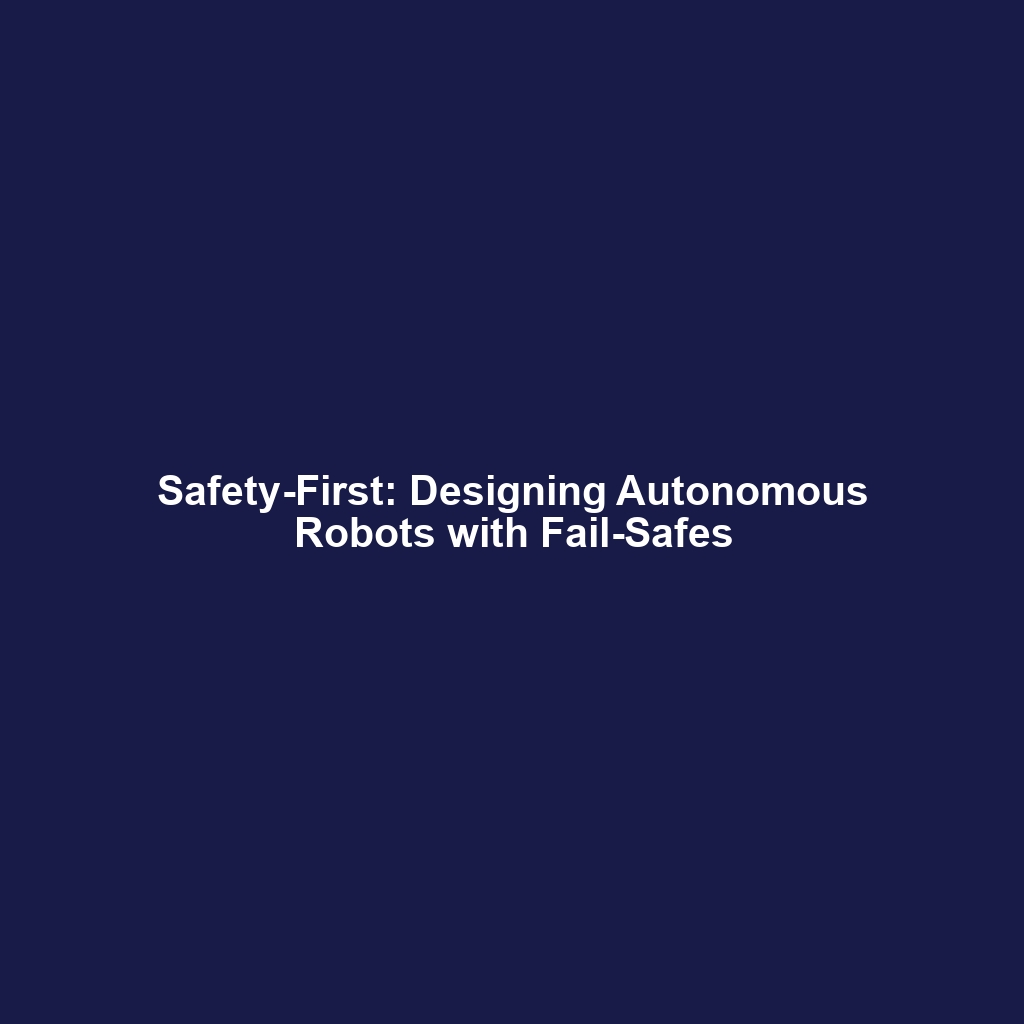Designing Robots with Safety in Mind: Redundancy Systems and Fail-Safes
Introduction
In the realm of autonomous robots, safety is paramount. As robots transition from controlled environments to the unpredictability of the real world, incorporating redundancy systems and fail-safes has become crucial. These design considerations not only enhance the reliability of robotic systems but also foster user trust and societal acceptance. The significance of these safety mechanisms cannot be overstated—they are foundational to the successful deployment of autonomous technology across various sectors.
Key Concepts
Understanding the principles behind designing robots with safety in mind involves recognizing the critical role of redundancy and fail-safes. Below are the key concepts:
Redundancy Systems
Redundancy involves having multiple components that perform the same function. This ensures that if one system fails, others can take over, preventing catastrophic failures and ensuring continuous operation.
Fail-Safes
Fail-safes are mechanisms that default to a safe condition in the event of a malfunction. These systems are vital in autonomous robots as they mitigate risks, providing a controlled response during unforeseen circumstances.
Integration into Autonomous Robots
The integration of these systems into autonomous robots helps ensure their operation is not only efficient but also secure and trustworthy, aligning with industry standards and regulations.
Applications and Real-World Uses
The application of designing robots with safety in mind can be seen in various fields. Here are a few significant examples:
- Healthcare Robotics: Surgical robots utilize redundancy to ensure precision and safety during procedures.
- Autonomous Vehicles: Safety systems in self-driving cars incorporate fail-safes to handle emergencies.
- Industrial Automation: Robots in manufacturing use redundancy systems to avoid shutdowns and maintain production efficiency.
These examples highlight how redundancy systems and fail-safes are actively applied to enhance the safety of autonomous robots in everyday scenarios.
Current Challenges
While pursuing safety in autonomous robots, several challenges persist:
- Complexity of Designing Redundant Systems: Designing effective redundancy without adding excessive costs or complexity can be difficult.
- Testing Fail-Safe Mechanisms: Evaluating fail-safes under all possible failure conditions presents significant logistical challenges.
- Integration Issues: Ensuring that redundancy and fail-safes are compatible with existing technology and systems can pose challenges.
Addressing these challenges of designing robots with safety in mind is crucial for advancing the field.
Future Research and Innovations
The future of autonomous robots is bright, with ongoing research pointing toward exciting innovations. Potential breakthroughs may include:
- AI-Driven Safety Systems: Leveraging artificial intelligence to predict and address potential failures before they occur.
- Smart Sensors: Developing advanced sensors that can autonomously detect and eliminate safety issues.
- Blockchain for Robot Safety: Using blockchain technology to create transparent safety logs and protocols.
These advancements represent the next generation of robotics, ensuring a safer and more efficient operation.
Conclusion
Designing robots with safety in mind through redundancy systems and fail-safes is essential for the future of autonomous robots. As these technologies evolve, embracing safety protocols will enhance functionality and user trust. For more insights, check out our related articles on robotics innovations and safety protocols in robotics.

